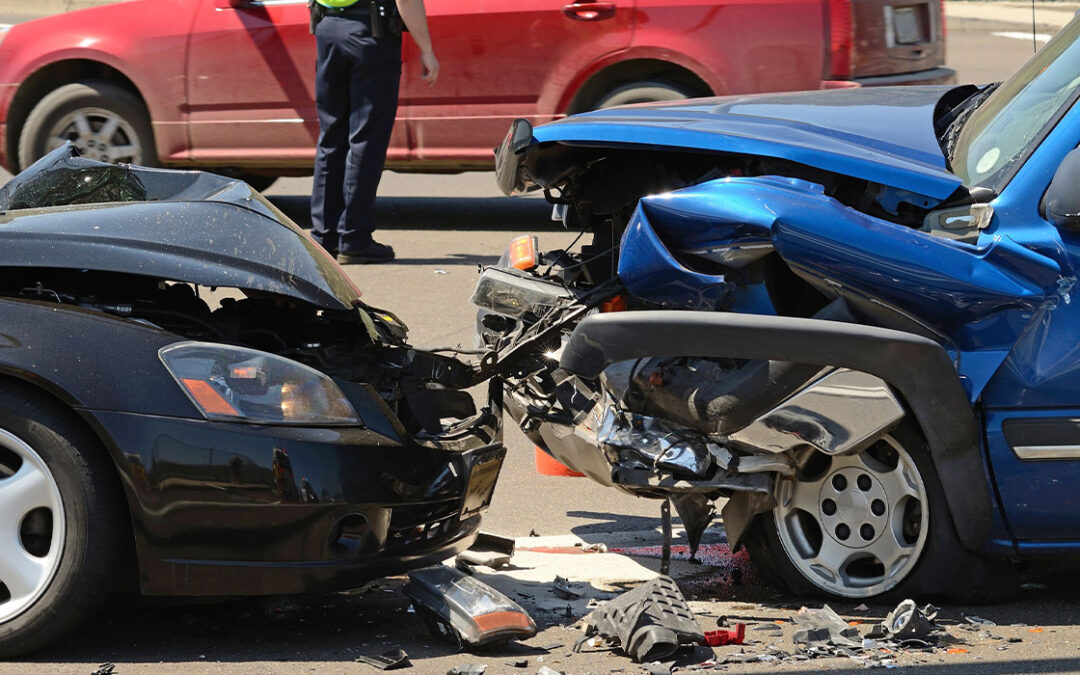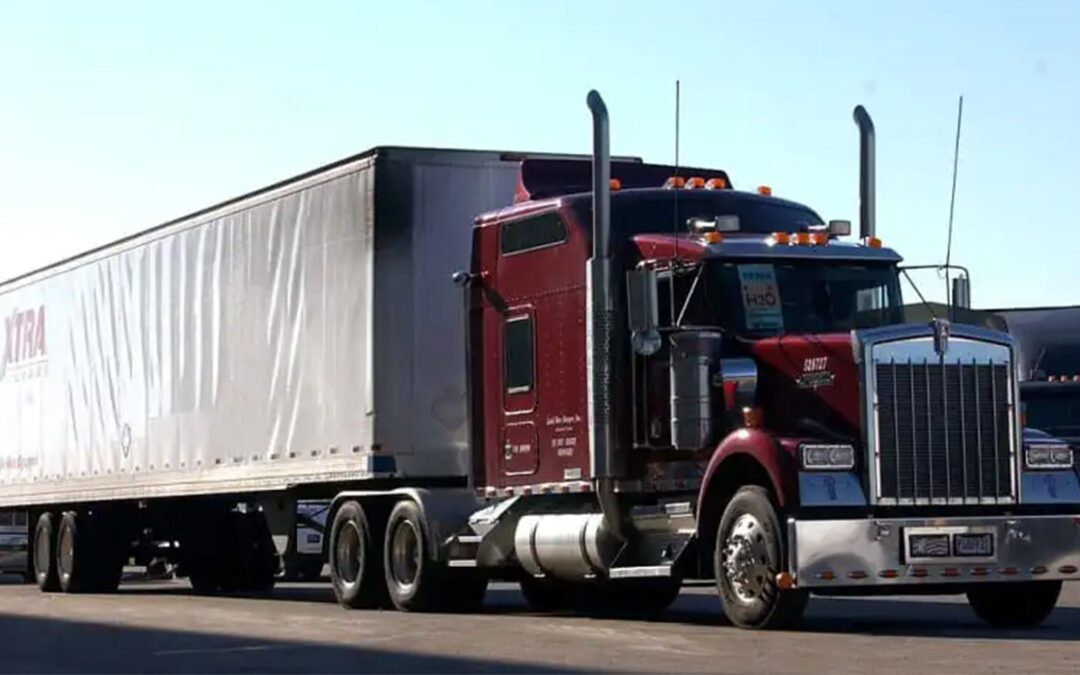
by Queener Law | Oct 27, 2018 | Colorado, Kentucky, Tennessee, Trucking Accident
Electronic Logging Devices Rule Held to be Constitutional
The Owner-Operator Independent Drivers Association filed a constitutional challenge against the electronic logging device rule, and the U.S. Court of Appeals for the 7th Circuit held that the rule is constitutional. It is on track to be fully implemented by Dec. 2017 unless the association appeals it to the Supreme Court of the United States. The regulation will require all large commercial trucks to have electronic devices installed, which will track and record whenever the trucks are in use.
The Lawsuit
The Owner-Operator Independent Drivers Association filed the lawsuit against the Federal Motor Carriers’ Administration on behalf of two truck owners. The drivers alleged that the regulation would violate their constitutional rights to privacy by recording all of their actions while they are driving. The court ruled on Oct. 31, 2016, holding that the electronic logging device mandate does not violate the constitutional right to privacy. The court found that the government’s interest in protecting other motorists outweighed any privacy issues. As a result, the rule is still scheduled to move forward. The plaintiffs have not said whether or not they intend to pursue the matter to the Supreme Court. If they do, and the court agrees to hear the case, it would be a final decision. If they do not appeal it, then the regulation will move forward.
Prior Lawsuit Against Previous ELD Rule Version
In 2010, the FMCSA had attempted to pass a prior regulation requiring electronic logging devices in commercial trucks. At that time, the Owner-Operator Independent Drivers Association filed a lawsuit against the FMCSA on the basis of constitutional privacy concerns. The Appeals Court held that the previous version was unconstitutional because it required the installation of cameras inside of the trucks. The current version does not, allowing it to pass constitutional muster.
Reasoning for the Rule
Large trucks have the potential of causing severe injuries and deaths when they cause truck accidents. This has led the government to institute numerous regulations on the trucking industry. The ELD rule is meant to prevent truck drivers from falsifying their log books and ignoring the hours-of-service rules. Those rules are in place to keep drowsy drivers off of the roads, a problem that a truck accidents attorney frequently sees in injury cases. A truck accidents attorney is hopeful that the new mandate will minimize the number of accidents that happen. Truck accidents often permanently change the quality of lives of their victims.

by Jennifer O'Connell | Oct 22, 2018 | Auto Accident, Colorado
What is Whiplash?
Whiplash is a common type of car accident injury in Colorado that can cause long-term complications for some victims that can reduce the quality of their lives. People who are involved in auto accidents should promptly seek medical attention. Some people may not initially recognize that they have been injured. Whiplash injury symptoms may not appear for hours or days after an accident. Getting prompt medical treatment may help people recover faster and may build stronger evidence that the whiplash resulted from their accidents. The most common type of car accident that may cause whiplash is a rear-end collision. When a vehicle is traveling slower than a vehicle that is approaching from behind or is at a standstill when it is struck, an occupant of the front vehicle may suffer whiplash.
Whiplash includes potential injuries to the neck, shoulders, head, ligaments, muscles, and bones. When a rear vehicle collides into a front vehicle, a front vehicle’s car occupants may have their heads and necks violently propelled forward because of the physical forces of the collision. As the forces subside, their heads and necks may be thrown backward, causing them to be hyper-extended. This violent front-to-back movement can cause multiple injuries to the muscles, ligaments, and bones of the neck and shoulders. While some people might recover from whiplash in a matter of weeks, others may face complications and chronic symptoms that can continue for months or years and that impact their ability to work and to enjoy life.
Complications of Whiplash
The Mayo Clinic reports that the common symptoms of whiplash may develop within 24 hours, but it may also take longer for them to appear. These symptoms include neck pain that worsens when people move their necks or turn their heads, reduced the range of motion of the neck, headaches, shoulder and arm pain, tingling in the arms, dizziness, and fatigue. People who suffer severe whiplash injuries may suffer the following complications:
- Chronic, severe headaches
- Pain radiating from the neck and shoulders into the arms
- Chronic, severe neck pain
Complications from whiplash can cause ongoing problems and interfere with the victims’ ability to function, making it crucial for people to get treatment.

by Queener Law | Oct 11, 2018 | Auto Accident, Colorado, Kentucky, Tennessee
Why Photos Are Important
Taking pictures immediately after an accident can help preserve crucial evidence of what occurred and which driver was at fault. Photographs can help prove a driver’s liability while also helping convince insurance companies that settling is a wise choice. Pictures can show the angles at which the vehicles collided, the direction of travel, the road and weather conditions, and other relevant information.
After an accident, it is common for people to be in states of shock. They might feel confused and unclear about exactly what happened. Pictures provide crucial information about what caused the accident that people might otherwise fail to notice or forget. Accident reconstructionists can use photographs to determine the relative positions of the vehicles, their speeds, and other contributing factors such as weather conditions or road conditions. This type of information can help present a clear picture of what happened and the liability of the responsible party or parties.
When and How to Take Photos
People who are injured in accidents that they believe were the fault of the other drivers should always try to take pictures immediately after the accidents. If they cannot do so themselves, they should ask someone else to photograph them. The pictures can be taken with a camera that is kept in the car or with a smartphone. The photographs should be taken before either vehicle is moved. People should take photographs of the positions of the cars and the damage to each. They should also take photographs of the other vehicle’s license plate. After getting these pictures, people should take wider pictures of the scene, including any road debris, skid marks, weather, nearby traffic control devices, or speed limit signs. Taking as many pictures as possible is a good idea.
In addition to taking pictures of the accident scene, people should also take photographs of their injuries. This can help show the link between the accident and the injuries if the insurance company attempts to blame the injuries on some intervening cause. People should also try to get the names and contact information of any witnesses who saw the accident so they can be contacted later. Having photographs and witness statements may help people succeed in subsequent claims with insurance companies.

by Jennifer O'Connell | Sep 24, 2018 | Colorado, Motorcycle Accident
Motorcycle Deaths in 2017
In 2017, 101 people died in Colorado motorcycle accidents, and a majority of them were caused by preventable driver or cyclist errors. Motorcyclists may be able to reduce their risk of becoming involved in accidents by understanding the common types of scenarios in which many collisions happen. They may also help to reduce their chances of suffering catastrophic injuries if they are involved in accidents by always wearing helmets and safety gear every time that they ride. The number of fatalities in motorcycle crashes in the state fell from a high of 125 deaths in 2016. Overall, traffic deaths have increased by 29 percent since 2014. The Colorado Department of Transportation reports that most of the motorcyclists who were killed in 2017 were not wearing helmets at the time of their accidents.
Common Motorcycle Crash Causes
There are several common motorcycle crash causes that are avoidable. The most common type of motorcycle accident involves a motor vehicle driver who fails to notice a motorcycle and turns left in front of the motorcycle. This type of accident occurs because of driver inattention or driver distraction. Other common crashes happen when drivers merge into the lanes in which motorcyclists are present. These accidents may be caused by driver inattention or distraction as well as by motorcyclists riding in the blind spots of drivers. Head-on accidents are also common, and they are often deadly when they involve motorcyclists.
Lane splitting accidents also are common and occur when motorcyclists pass slower-moving cars by driving in between them. Driving or riding while under the influence of alcohol or drugs also frequently contributes to motorcycle collisions. Speeding and taking tight corners too fast also contribute to motorcycle collisions.
Avoiding Motorcycle Accidents
Motorcyclists can take steps to prevent accidents. They should always wear helmets that meet the safety guidelines as well as protective boots and clothing while they ride. They should anticipate the actions of drivers that they see who are preparing to turn left. If motorcyclists are in blind spots, they should speed up or slow down to get out of them. Motorcyclists should keep a safe distance from other vehicles, avoid speeding and never ride while they are under the influence of alcohol or drugs.

by Jennifer O'Connell | Sep 14, 2018 | Colorado, Trucking Accident
Data Collected by Trucks’ Black Boxes
When commercial truck drivers cause accidents in Colorado, it is important for the injured victims or the families of people who are killed to try to preserve the evidence that is contained on the trucks’ black boxes. Like airplanes, commercial trucks contain electronic control modules or electronic logging devices that record important data about the truck in the moments leading up to the crash that can help plaintiffs prove the fault of the truck drivers. This type of data has the potential to help to strengthen the claims of injured victims or of surviving family members.
The Federal Motor Carrier Safety Administration requires that all commercial trucks have electronic logging devices installed in them. These devices record such information as the speed at which the truck was traveling, whether the driver applied the brakes or the gas pedal, the change in the truck’s velocity after the impact, whether the driver was wearing a seat belt and whether the airbags deployed. They also record when the trucks are in motion and record data about multiple crashes and the time that elapses between them. All of this information can be important in a claim involving a commercial truck. Plaintiffs may be able to use the data to show that the truck drivers did something wrong so their cases are strengthened.
Getting Evidence From Black Boxes
Some electronic logging devices store information about the trucks while others transmit it back to the companies. Because of the possibility of the evidence getting sent to the companies, there is a potential that the companies might alter or destroy the data in an effort to avoid liability. Companies that destroy electronic evidence may face sanctions from the court. It is possible to secure a court order to preserve black box evidence by filing a motion for preservation of the evidence. This can prevent the trucking carrier from altering or destroying the data on the black box of the commercial truck that was involved in the accident.
While black box data is important, there are other types of evidence that can also help to prove liability. An accident reconstruction expert may review the scene and take photographs. He or she may measure any skid marks and complete calculations that might reveal the speeds and positions of the truck and the other vehicles. With strong evidence, plaintiffs are likelier to receive fair settlements.

by Jennifer O'Connell | Sep 7, 2018 | Auto Accident, Colorado
Defective Traffic Signals
Traffic lights in Colorado sometimes malfunction or are defective and cause accidents, leading to questions of liability. When a defective traffic light contributes to the cause of an accident, the municipality in which it is located might be liable. Proving liability may require the help of experts such as accident re-constructionists and civil engineers to demonstrate that the light was defective and malfunctioned, leading to the accident.
Fault When Traffic Lights Cause Accidents
In most car accidents, one or both of the drivers are at fault. When a defective traffic light contributes to the cause of an accident, proving liability may be more difficult. One of the drivers may be partly at fault, but the defective light may also have contributed to the accident. For example, if a light shows green in two perpendicular directions at the same time and a speeding driver strikes someone else who is continuing through the intersection, the driver who was speeding may be partly to blame for the accident, but the malfunctioning light also contributed. This might mean that a resulting claim might exist against both the speeding driver as well as the municipality, manufacturer, and others. An accident reconstruction expert may help by reconstructing what occurred at the accident scene to show that the traffic light malfunctioned and led to the accident.
Municipalities may be liable if the defect has existed for a long enough period of time that it should have reasonably been discovered and they failed to repair it. In one 2013 case in Detroit involving a motorcyclist who was killed after a traffic light malfunctioned, the neighbors reported that the light had been defective for a long time. The city had failed to respond to their complaints about the light despite the numerous reports. In a case in which there is a clear record of numerous reports to a city about defective or malfunctioning traffic lights, but nothing was done, the city may be liable to pay damages to the victims of accidents that result. Other types of evidence that might help claims involving defective traffic lights include witnesses who saw the accidents happen and camera footage if it is available. Statements from people who have filed complaints about the lights and city records of complaints may also be important for proving a claim.






